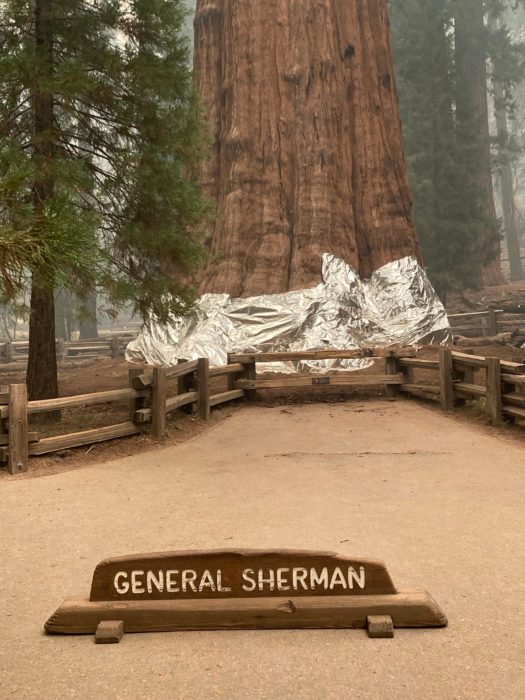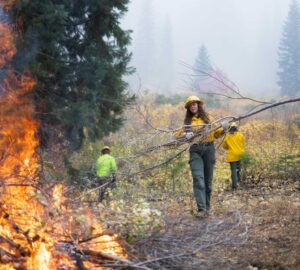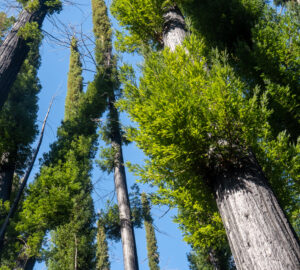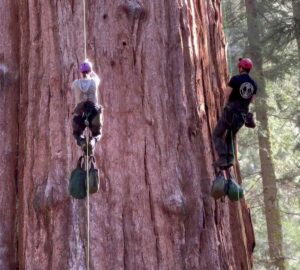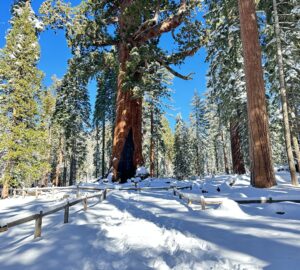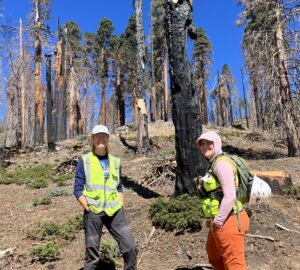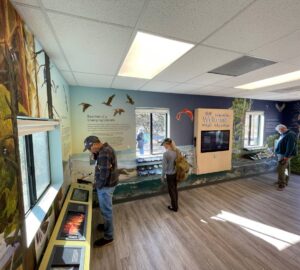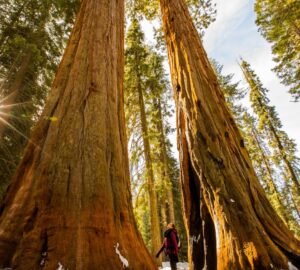Concern grows about wildfire in Giant Forest and surrounding groves
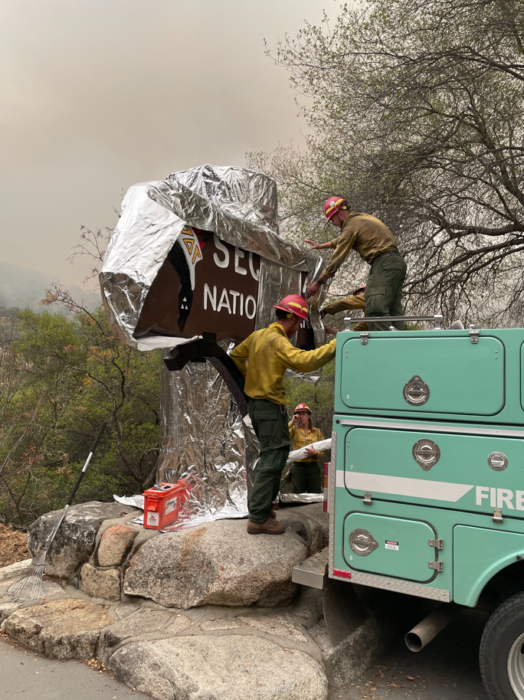
Toward the south end of the range, lightning sparked the Windy Fire within the North Peyrone Grove on the Tule River Reservation. Northward, two fires have now merged and become the KNP Complex , which is growing closer to a number of giant sequoia groves, including the Giant Forest, where some of the largest trees in the world can be found. People make pilgrimages from all over the world to see and experience the Giant Forest. To be in the presence of these tall, immense, old trees is one of the more inspiring experiences one can have in nature.
The Windy Fire has quickly grown to 5,461 acres and has now stretched into both the North Peyrone Grove and South Peyrone Grove, into the Giant Sequoia National Monument and the Sequoia National Forest. At the last report, it is 0% contained. We have little information about how the giant sequoia in these groves have fared. The fire is near the League’s Red Hill giant sequoia property, and also not far from the Black Mountain Grove, which also saw fire in 2017 that killed a number of giant sequoia . (Update: There are indications that fire is now also in Long Meadow Grove and is threatening Cunningham Grove.)
The KNP Complex, which originally started as the Colony and Paradise fires, has now exceeded 9,300 acres. Last report indicated the fire was within a mile of the Giant Forest, home of the General Sherman tree, considered the world’s largest tree. Sequoia National Park has been closed to the public. Fire crews are now prepping the General Sherman and other trees to defend against fire. One defense is to wrap the base of these trees in aluminum-coated structure wrap to prevent damage to their cambium
Although giant sequoia have evolved to thrive in an ecosystem that includes fire, today’s wildfires are different. Because fires have been widely suppressed over the last hundred years, forests have become unnaturally overgrown. Without frequent low- to moderate-severity fires to clear out the underbrush and small trees, recent wildfires are burning hotter and moving faster. With these fires that burn larger areas, more frequently, at higher severity, giant sequoia trees and seedbanks are dying when they should be enduring for centuries. The League has a great online explainer about the current plight of the giant sequoia.
Fires last year in the giant sequoia range killed an unprecedented number of the oldest and largest giant sequoia , prompting Save the Redwoods League and others to call for immediate action to build more resilience into these treasured landscapes.
Given the tremendous loss of giant sequoia last year, concern about the Giant Forest is warranted. But unlike many of the giant sequoia groves, Giant Forest has been consistently treated with prescribed fire and other stewardship methods since the 1970’s, so we are hoping it is more likely to survive an even more catastrophic fire.
The KNP Complex could pose a greater threat to other groves in the area if it spreads. These include Oriole Lake Grove, Suwanee Grove, Squirrel Creek Grove, New Oriole Lake Grove, and potentially even Redwood Creek, Atwell/East Fork, and Castle Creek groves.
We’ll continue to update you with information as we get it.
In the meantime, there are ways you can help:
- Sign our action alert asking the USDA’s Forest Service to take immediate action in the giant sequoia range.
- If you live in California, ask the Governor to sign an important bill on prescribed and cultural burning.
- Donate to the League’s Wildfire Fund.
